
Полная версия
Irish Castles
Augher Castle
also known as SPUR ROYAL CASTLE, AUGHER, COUNTY TYRONE
Augher Castle is a tower house built around 1615 by Thomas Ridgeway, a Devon man who served as Treasurer of Ireland and who assisted in the Plantation of Ulster. For this he was awarded 2000 acres of land in County Tyrone and later a title, the Earl of Londonderry. He built Augher Castle on the site of an older fortress but he didn’t spend much time there, and political ambitions found him often in London. Augher Castle was burned in 1689 by the Jacobites as the Siege of Derry was under way. It was originally a square, three-storey Plantation castle, with an unusual triangular tower in the middle of each of its sides. The castle was restored around 1832 by Sir James Richardson-Bunbury, who added two castellated wings, transforming the old castle into a Georgian mansion house. The house remains in the Richardson-Bunbury family today.
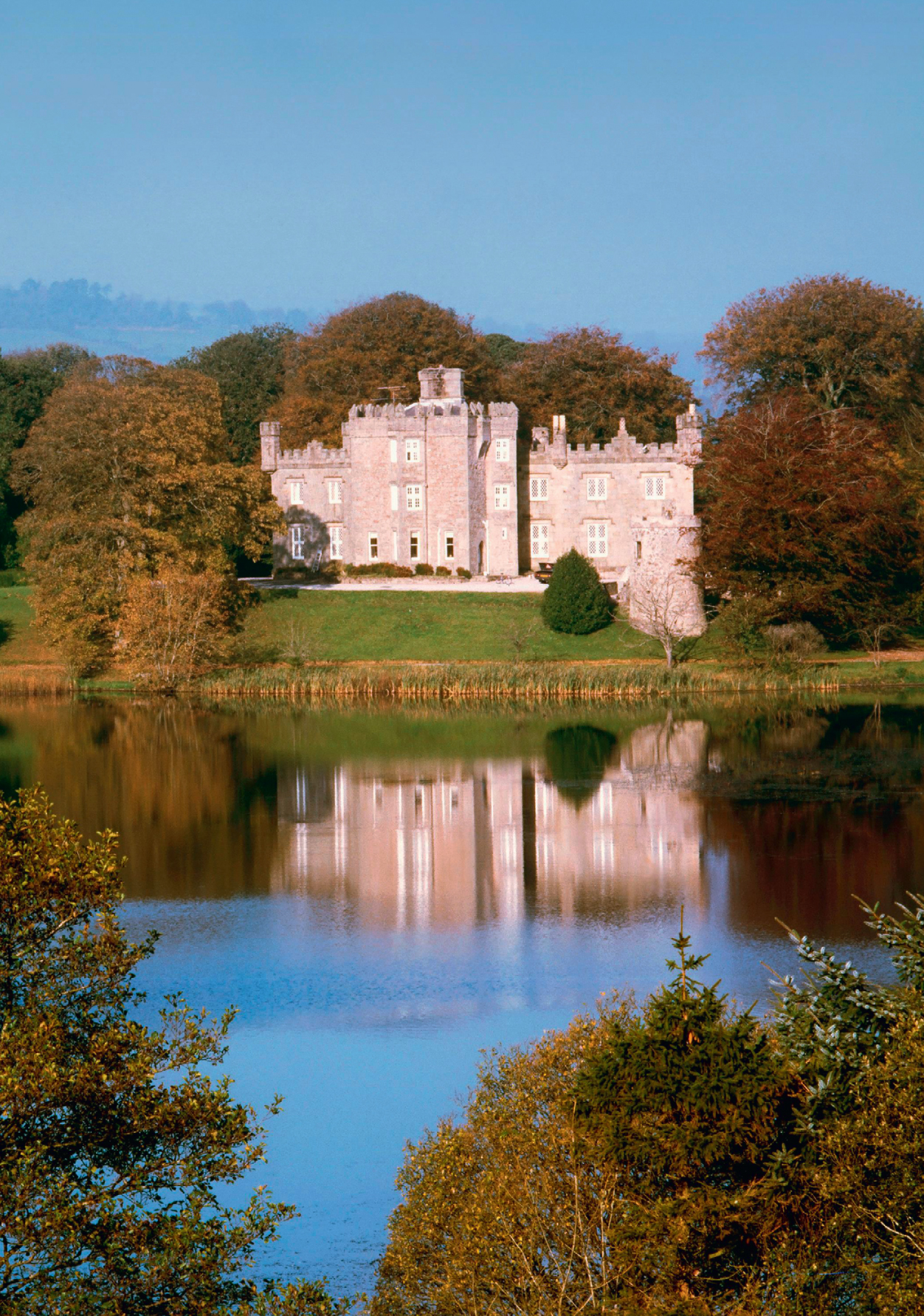

Ballea Castle
CARRIGALINE, COUNTY CORK
Situated on a cliff overlooking the Owenboy river in Carrigaline, south of Cork City, Ballea dates from the fifteenth century, when it was home to the McCarthy family. Extended in the seventeenth century by the McCarthys, the castle eventually fell into disrepair until around 1750, when restoration work was undertaken by the Hodder family, who owned Ballea until the early 1900s. The castle has been modernized in more recent times and is now a private residence.

Ballinacarriga Castle
DUNMANWAY, WEST CORK
Situated on a high rocky outcrop overlooking Ballinacarriga Lough in West Cork, Ballinacarriga tower house is believed to have been built by the O’Muirthile (Hurley) family, with the date 1585 carved into the wall on the fourth floor. But there is evidence that the castle was originally an older McCarthy stronghold. Inside, at the second-storey level, carving in the window embrasure is of a female figure accompanied by five roses, thought to be of Catherine O’Cullane, wife of Randall Hurley, and her five children. The castle and lands were confiscated and granted to English settlers after the family joined the rebellion of 1641 against the English settlement of Munster. The castle passed through various families and some religious carvings suggest it may also have been used as a church. It has been unoccupied since the early nineteenth century.
Ballinlough Castle
CLONMELLON, COUNTY WESTMEATH
+353 46 943 3234 | www.ballinloughcastle.ie
Built in 1641, Ballinlough is the ancestral home of the Nugent family, who claim lineage back to Brian, the fourth king of Connacht. Legend goes that he had one daughter and 24 sons, twelve of whom are said to have been baptized by St Patrick. The coat of arms over the front door is that of the O’Reilly clan: the family changed their name from O’Reilly to Nugent to avail of a dowry in 1812. Since then several generations of Baronet Nugents have occupied the house, making them one of the very few seventeenth-century Irish Catholic families who still live in their original family home. The castle was extended in the late eighteenth century, when a new wing was added to the design of the talented amateur architect Thomas Wogan Browne, who was responsible for Malahide Castle on the outskirts of Dublin. Today Ballinlough is best known as the venue for the popular Body & Soul festival which takes place in the grounds in the month of June. The house is also available as a venue for weddings and events, and the extensive grounds are also open to the public.
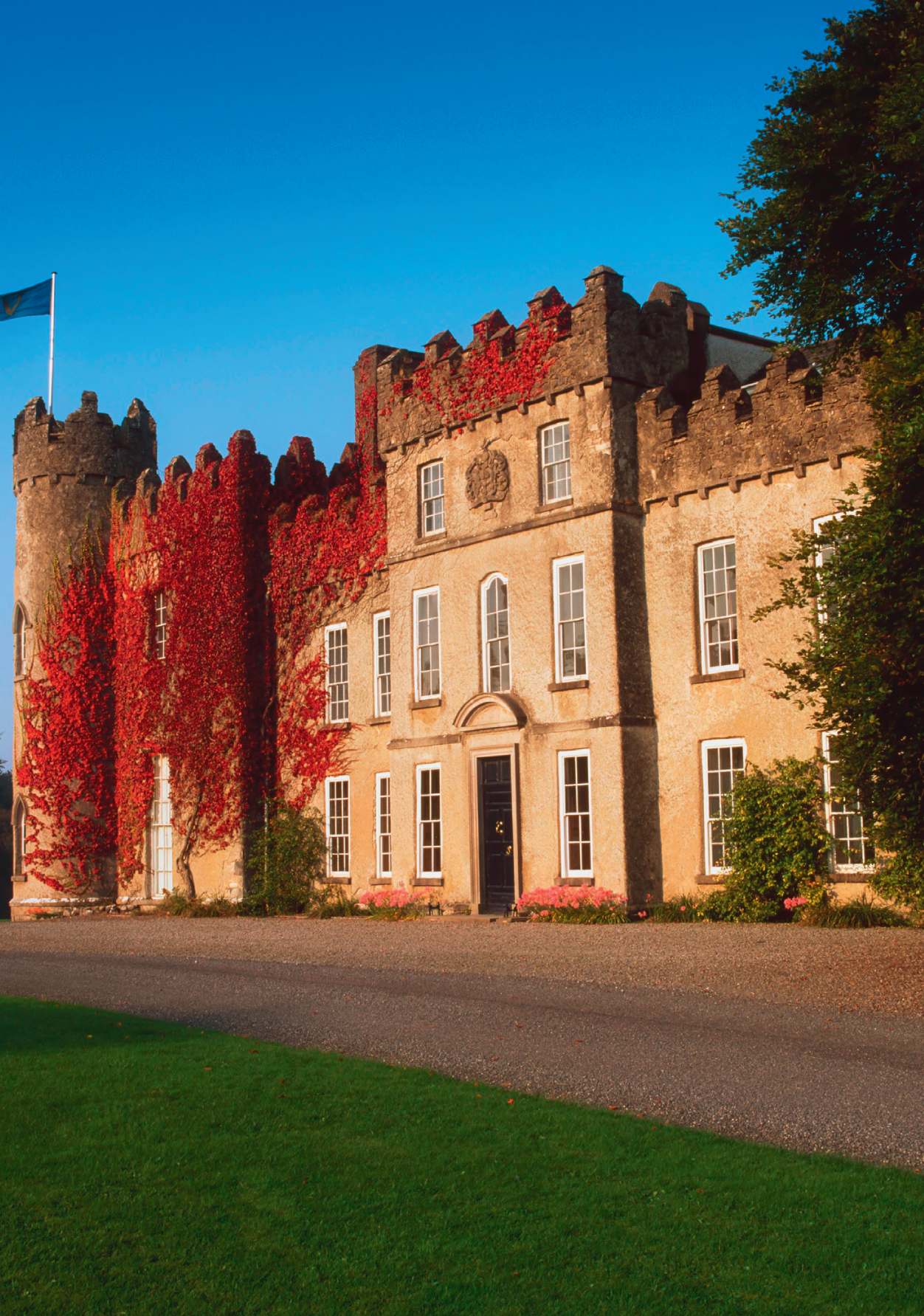
Ballintober Castle
BALLINTOBER, COUNTY ROSCOMMON
www.roscommon.ie
A large moated castle with a central courtyard, or bawn, of 1.5 acres, Ballintober dates from around 1290. It was built on an imposing scale, with enormous corner towers and small projecting turrets. It is thought the builder was William de Burgo, and that the castle’s large area was intended to permit an Anglo-Norman settlement within its walls but, within a few decades of being built, Ballintober came into the possession of the O’Connor clan and was the seat of the O’Connor Don until 1652. In 1598, the castle was taken by Red Hugh O’Donnell, who used cannons to bombard it and forced Hugh O’Connor Don to renounce his allegiance to the Crown. In 1641, it became a centre of Catholic resistance and it was confiscated in 1652. The castle and lands were restored to the O’Connors in 1677 and they remained there until 1701, when the castle was abandoned and fell into ruin.


Ballydonnellan Castle
LOUGHREA, COUNTY GALWAY
All that remains today of the stronghold of the powerful O’Donnellan clan, who controlled lands between Lough Rea and Ballinsloe, is a ruin of a fifteenth-century tower and the substantial house grafted onto it in the mid eighteenth century. Ballydonnellan Castle is likely to have been built some time after 1412, an early fortress on the site having been destroyed by fire. The entire edifice was still standing when it was mapped in the 1890s, but had fallen into decay by the early twentieth century and is now in ruins. Fragments of its former glory, such as fine plasterwork, can be glimpsed through the ivy that has all but engulfed it.

Ballyhack Castle
BALLYHACK, COUNTY WEXFORD
+353 51 389468 | www.heritageireland.ie
A well-preserved fifteenth-century tower house that stands guard over the Waterford Estuary, Ballyhack Castle is thought to have been built, circa 1450, by the Order of Knights of the Hospital of Saint John of Jerusalem, a military order founded at the beginning of the twelfth century at the time of the Crusades. The castle is open to the public, having been partially restored, and visitors can see a classic murder hole that allowed for attackers to be assaulted from above with cascade of rocks. A permanent exhibition displays objects relating to the Crusades, the Normans, and medieval monks.
Ballynahinch Castle
RECESS, CONNEMARA, COUNTY GALWAY
+353 95 31006 | www.ballynahinch-castle.com
Surrounded by woodlands in the heart of Connemara with a backdrop of the Twelve Bens mountains, Ballynahinch Castle was built in the eighteenth century by the powerful Martin family, who produced Humanity Dick Martin, an MP so named for his championing of animal rights, but also known as Hair-Trigger Dick for the several people he killed or wounded in duels.
The castle is set on the banks of the Owenmore river, renowned for its fly fishing, and it was this that attracted the Indian prince and cricketer Ranjitsinhji (“Ranji”), who fell for its romantic setting in the 1920s. He renovated the castle and built fishing huts and piers along the river, and he lived at Ballynahinch until his death in 1933. The castle has been run as an up-market hotel since 1946 and has recently been entirely refurbished by its current owner, the businessman Denis O’Brien.
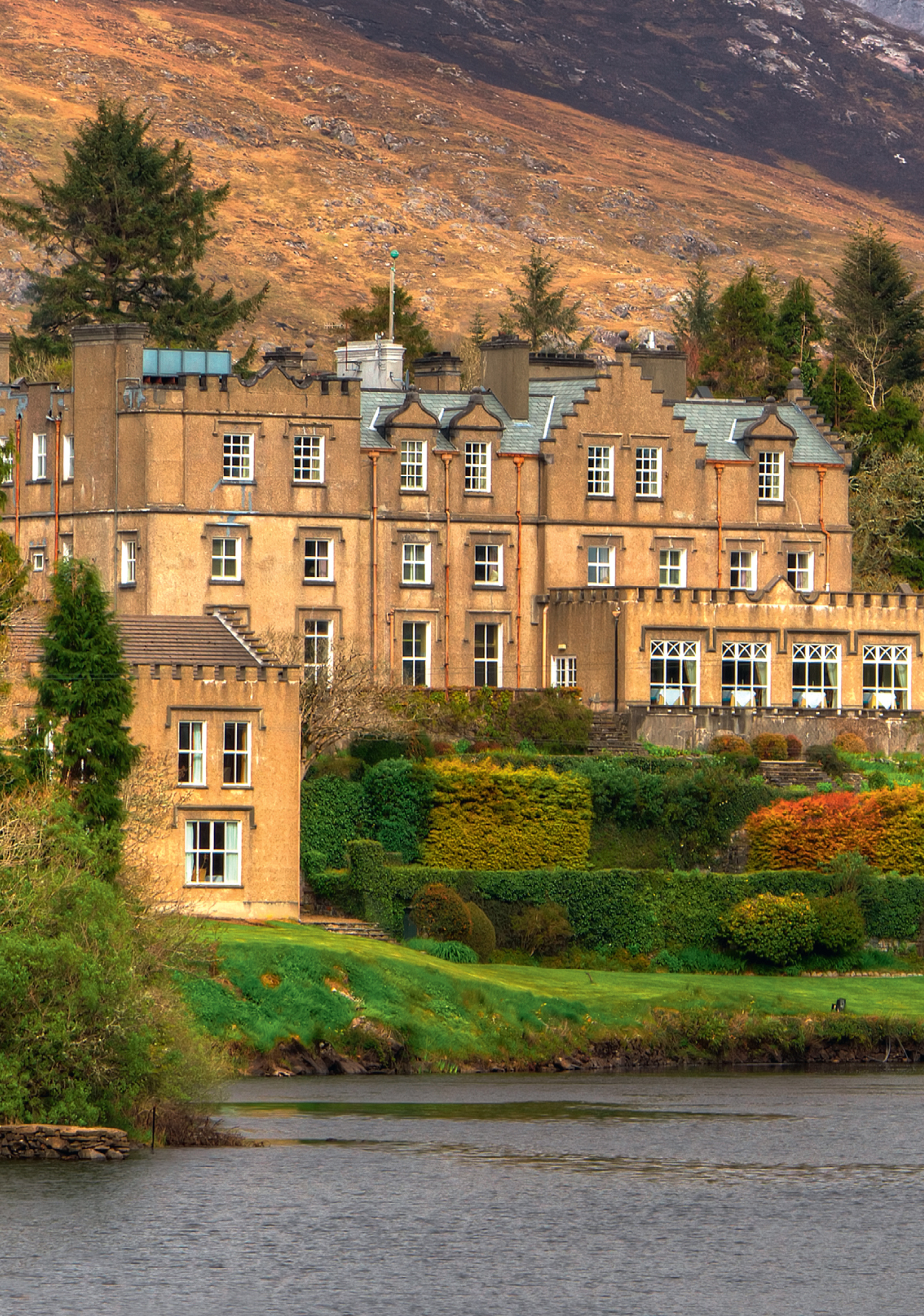
Bargy Castle
TOMHAGGARD, COUNTY WEXFORD
One of a number of fortresses built in the fifteenth century by the Rossiter family who settled in Ireland following the Norman invasion, Bargy Castle was confiscated by Cromwell in 1667, in response to Rossiter’s part in the defence of Wexford. The castle was then granted to William Ivory, who sold it to the Harvey family. They held it until the mid twentieth century, when it was bought by General Sir Eric de Burgh, a former Chief of Staff in the Indian Army, and the grandfather of musician and songwriter Chris de Burgh. The singer lived there as a child with his parents Charles and Maeve Davison, who ran the castle as a hotel.
The castle is a private residence and cannot be visited.
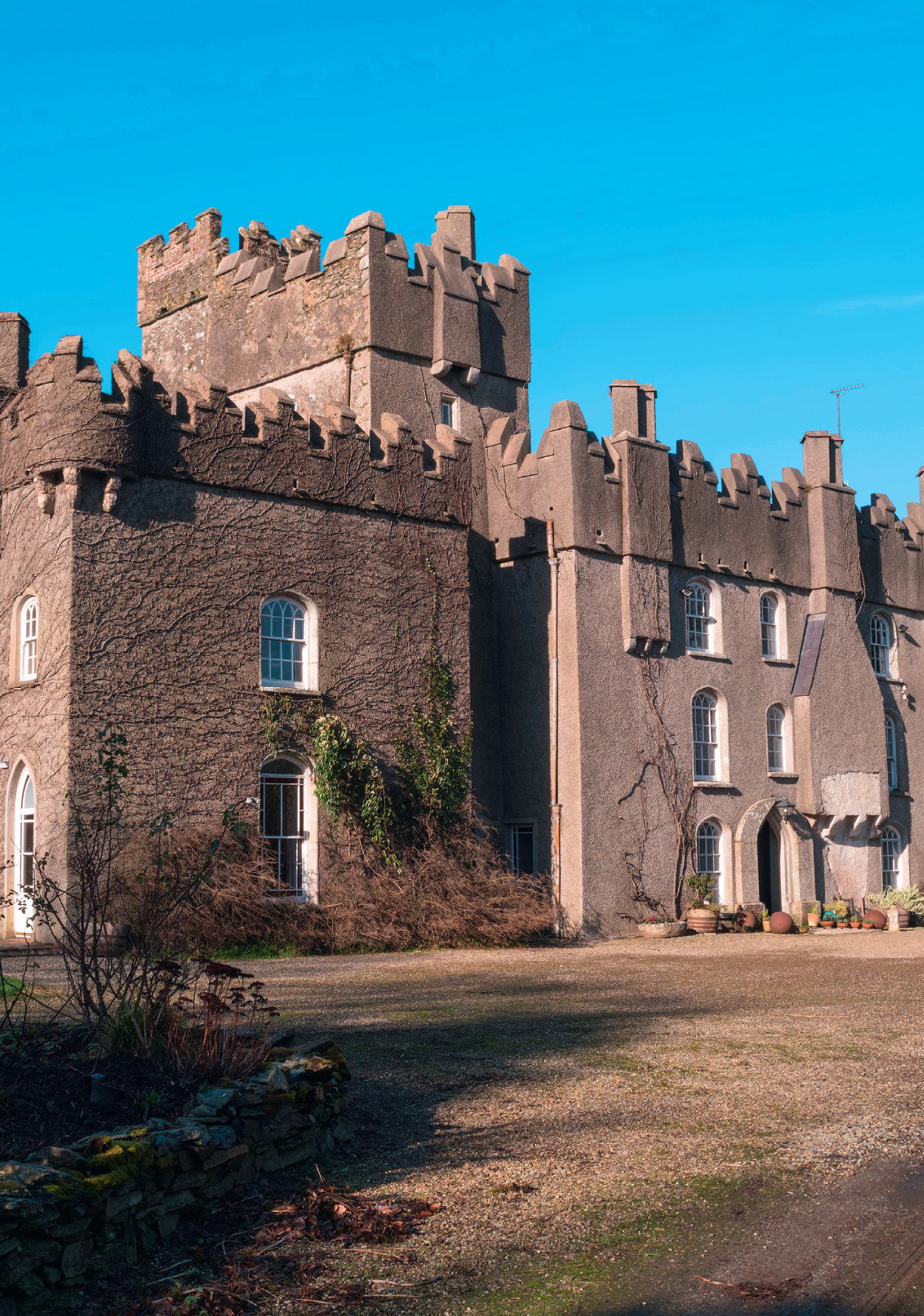
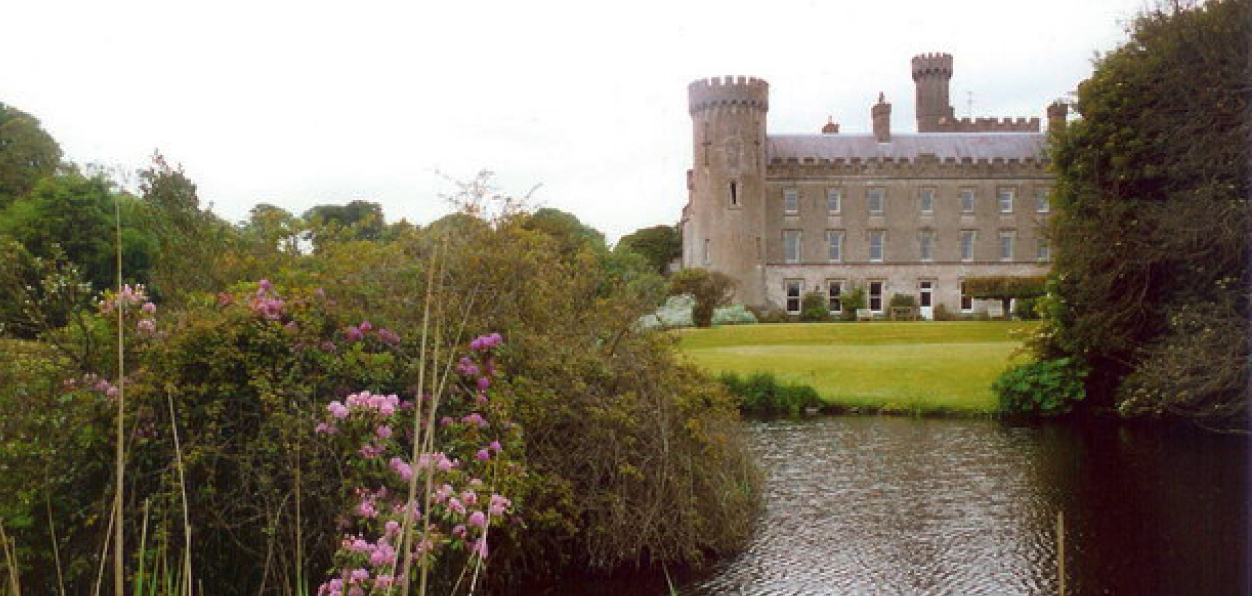
Barmeath Castle
DUNLEER, COUNTY LOUTH
+353 41 685 1205 | www.barmeath-castle.com
Originally the site of a medieval tower house with sweeping views over Dundalk Bay, Barmeath Castle was enlarged in the mid eighteenth century, with the addition of a substantial residence that has been home to the Bellew family for generations. The impressive castellated façade was enhanced in the 1830s with the addition of a portcullis entrance, and a turreted curtain wall that encloses a large courtyard. The castle is surrounded by ten acres of the gardens originally laid out by English landscape architect and astronomer Thomas Wright. The gardens, which have been restored in recent years, include an eighteenth-century archery ground surrounded by Irish yew.
The castle is available to rent on Airbnb.
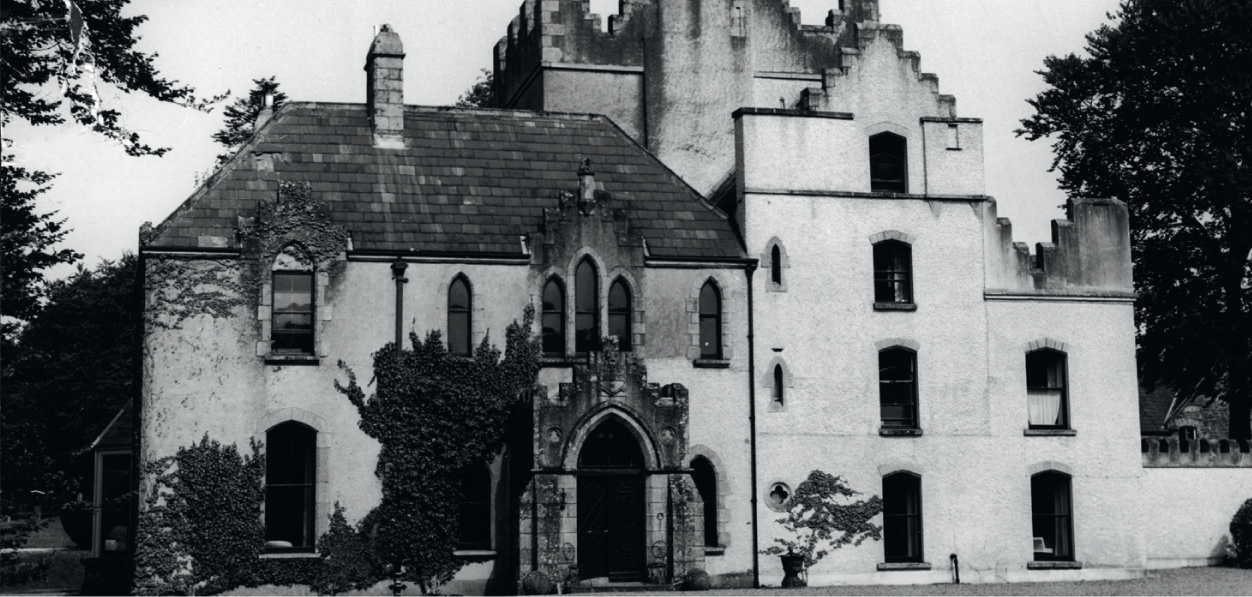
Barretstown Castle
BALLYMORE EUSTACE, COUNTY KILDARE
+353 45 864 115 | www.barretstown.org
A tower house with a Gothic Victorian addition, Barretstown was first recorded in a 1547 inquisition held after the Dissolution of the Monasteries, when it was listed as the property of the Archbishop of Dublin. It was confiscated by the Crown and subsequently leased to the Eustaces, a distinguished family who had arrived in Ireland at the time of the Norman invasion and who gave their name to the town that grew up around it – Ballymore Eustace. The castle has had a number of wealthy international owners including cosmetics tycoon Elizabeth Arden and billionaire retailer Galen Weston, who gifted it to the Irish State. Since the mid 1990s, the 500-acre estate has been run as a camp and respite centre for seriously ill children and their families, by a charity founded by the late actor Paul Newman.
Barryscourt Castle
BARRYSCOURT, CARRIGTWOHILL, COUNTY CORK
A typical fifteenth-century tower house, Barryscourt Castle was for centuries home to the Norman De Barry family. There is evidence that this site has been occupied for as long as one thousand years. Phillip De Barry built a castle here in 1202, but the present tower dates from around the mid sixteenth century.
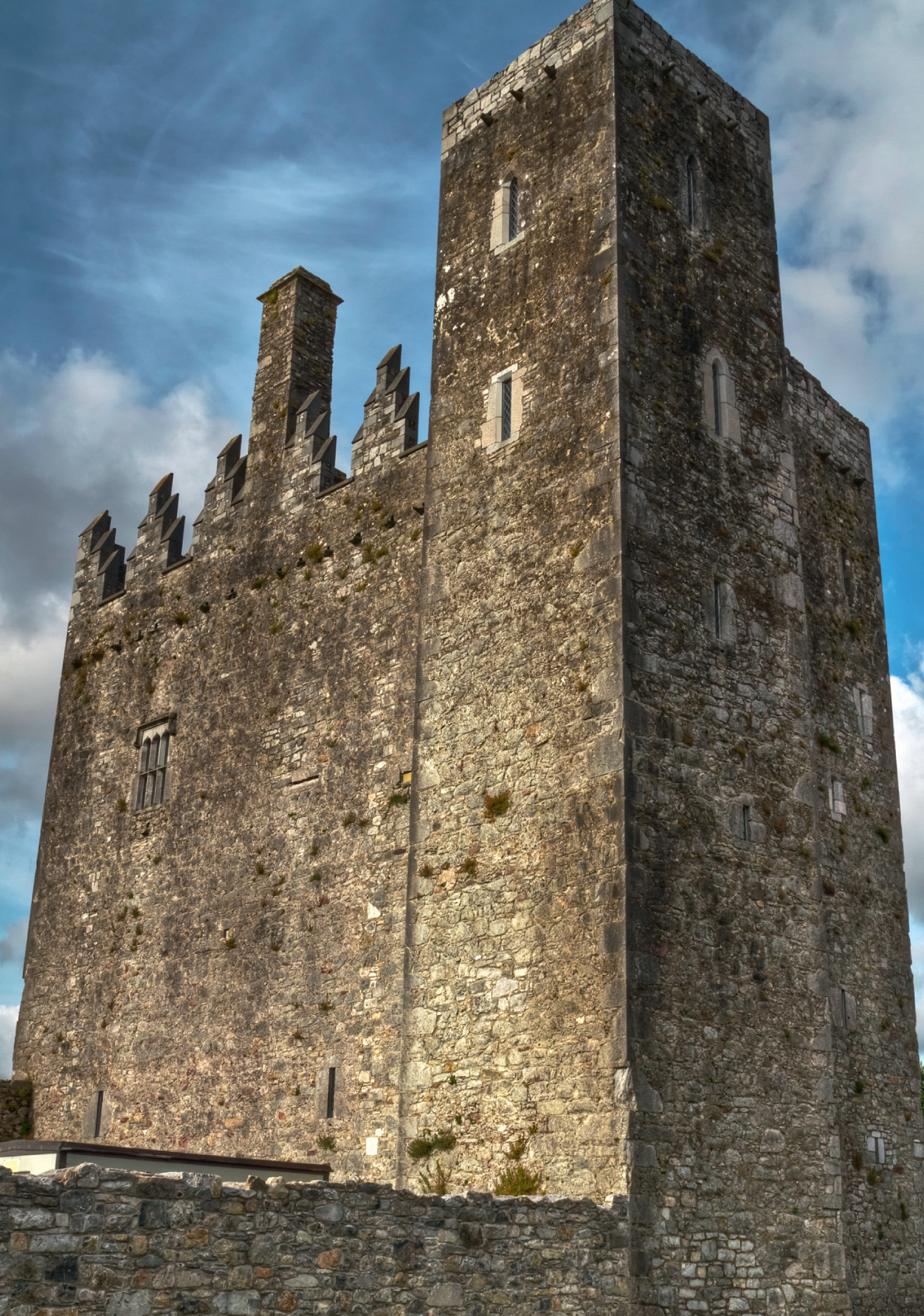
Belfast Castle
ANTRIM ROAD, BELFAST, BT15 5GR
+44 28 9077 6925 | www.belfastcastle.co.uk
The original Belfast Castle, built in the late twelfth century by the Normans, was located in the heart of the city, around Castle Place and Donegall Place. It was the stronghold of the first Baron Chichester (better known as Sir Arthur Chichester), but was burned down in 1708, leaving only street names to mark the site. The Chichester family decamped to the suburbs and today’s Belfast Castle was built in the mid nineteenth century by the third Marquess of Donegall, who designed it in the Scottish baronial style. The castle cost a fortune to build, and was designed by Charles Lanyon of the architectural firm Lanyon, Lynn and Lanyon. After Lord Donegall’s death and the family’s financial demise, the eighth Earl of Shaftesbury, who had married into the family, completed the castle, which was subsequently presented to the city of Belfast. It is now used for civic functions and private events but it does have an interesting visitor centre telling the story of the surrounding area from Stone Age times. The grounds also include an adventure playground for children.
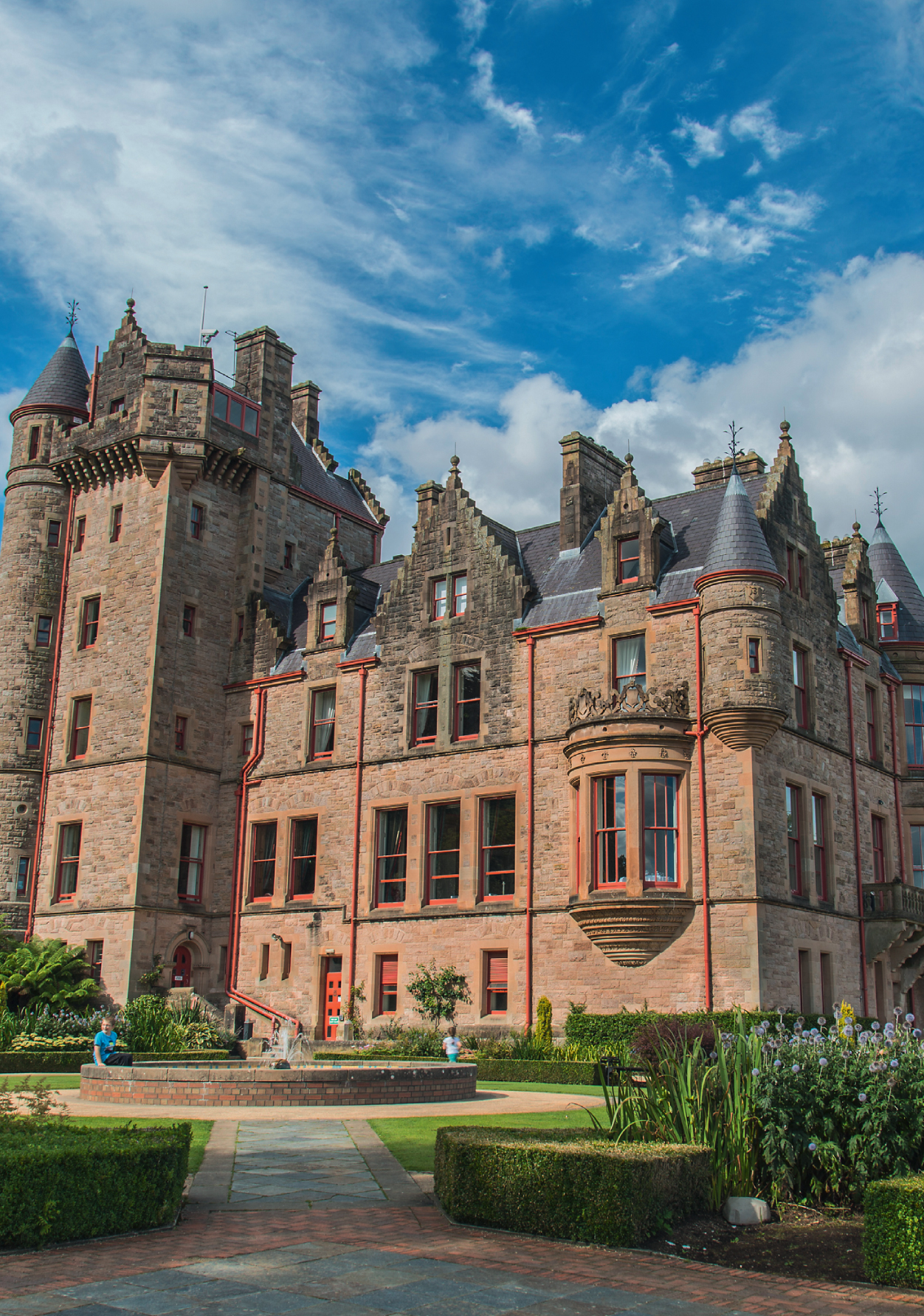
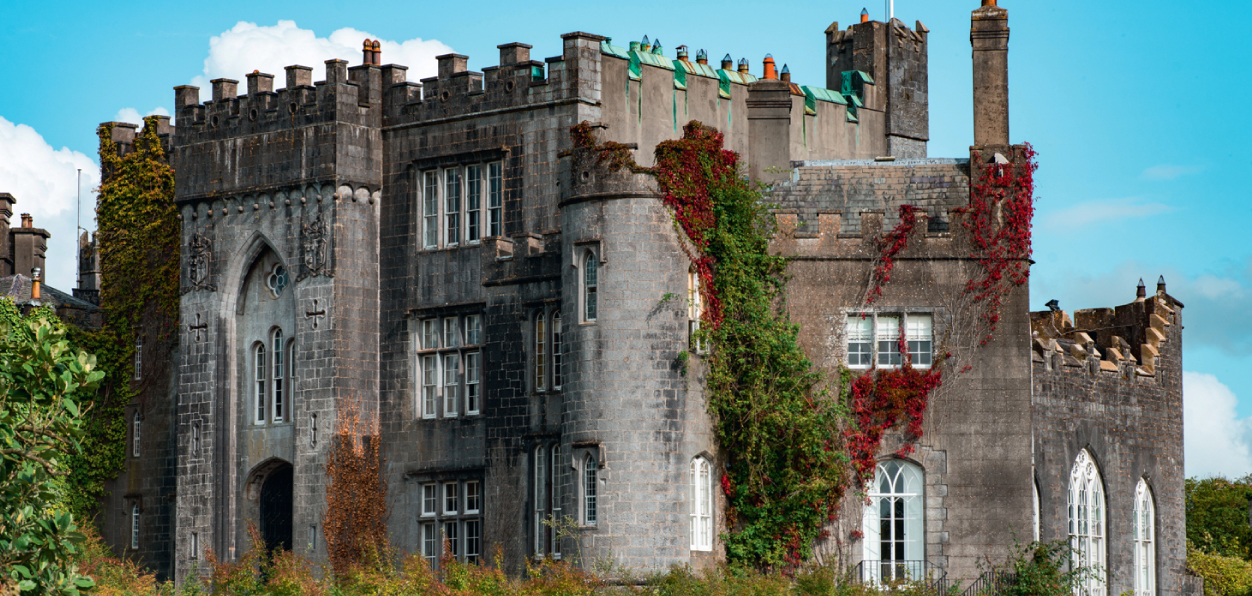
Birr Castle
TOWNPARKS, BIRR, COUNTY OFFALY
+353 57 912 0336 | www.birrcastle.com
In 1620, Sir Laurence Parsons built a new castle on the site of an older building, and then extensively refurbished it in the 1640s. The nineteenth century saw Birr become a great centre of scientific research, when William Parsons, the third Earl, built a great telescope in the grounds. His wife Mary, whose fortune helped him to build the telescope and make many improvements to the castle, was a keen photographer. Her perfectly preserved dark room is one of the many fascinating aspects of the castle’s superbly decorated interior. The castle grounds are open to the public and have been enhanced to include a Science Centre.
Birr Castle remains the private residence of the Parsons family.
Конец ознакомительного фрагмента.
Текст предоставлен ООО «ЛитРес».
Прочитайте эту книгу целиком, купив полную легальную версию на ЛитРес.
Безопасно оплатить книгу можно банковской картой Visa, MasterCard, Maestro, со счета мобильного телефона, с платежного терминала, в салоне МТС или Связной, через PayPal, WebMoney, Яндекс.Деньги, QIWI Кошелек, бонусными картами или другим удобным Вам способом.



